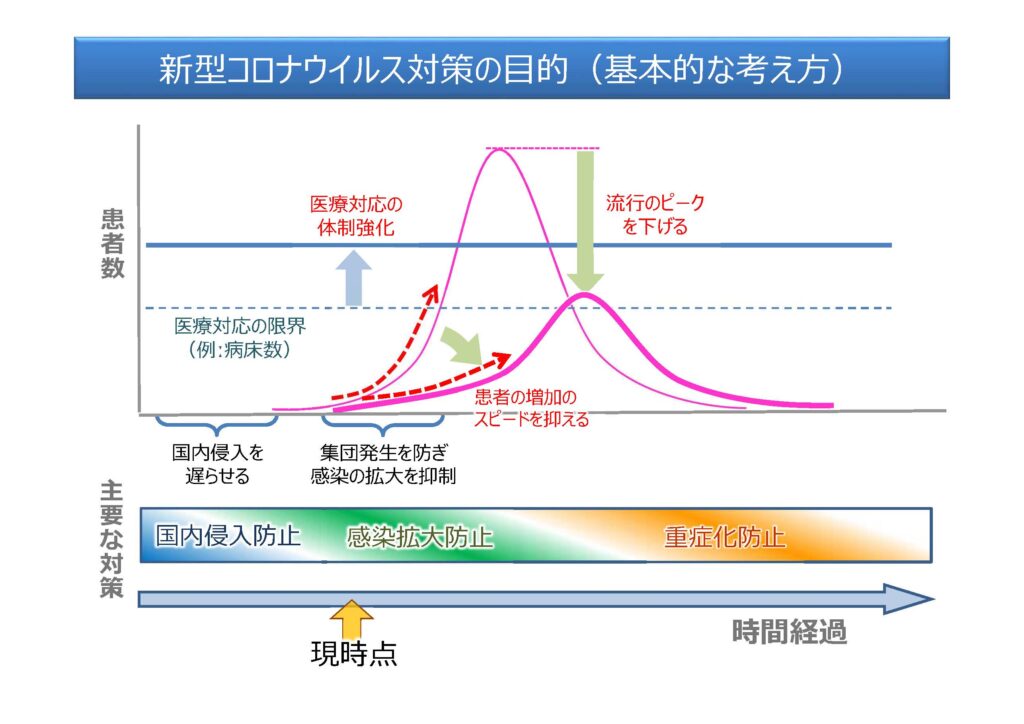
The stragety of the Japanse health authorities against COVID-19 has been to “lower the peak” of virus infection/spread. Looking at the chart, immediate questions would be how that can happen and how a lower peak would lead to a less number of total patients, if other conditions are equal, as shown in the smaller space under the lower curve. Perhaps the authorities are expecting that lock-down type measures (e.g., school closing) would work to lower the propagation/infection rate of the virus. However, it seems highly optimistic to assume that temporary propagation rate reduction will continue. Or perhaps their ideas is to earn time for development of new treatment. Either way, the presentation captures the level of scientific analysis and hope-driven thinking in Japanese policy debate at a serious health crisis.
新型コロナウィルスに対する厚労省の戦略は感染者数の「ピークを下げる」ことにある。しかしこの図はどのようにしてピークを下げ、その結果として感染者総数(曲線の下の面積)が低下するのか説明していない。厚労省としてはロックダウンに類する措置(学校休校など)がウィルスの感染率を低下させるとみているのかもしれない。だとしても一時的に低下した感染率が継続すると想定するのは楽観的という他ない。あるいは新規治療法の開発に期待しているのかもしれない。いずれにせよ、この図は保健危機に際しての日本の政策論争における科学的な分析の水準と、希望をベースとする思考形態を良く物語る。